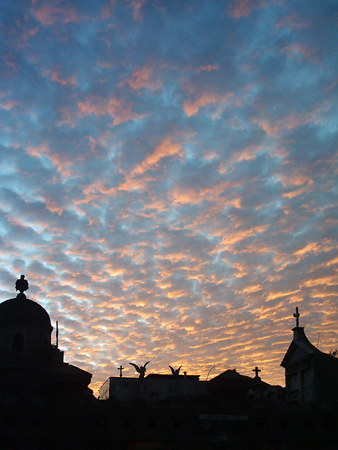
Documenting Recoleta Cemetery in Buenos Aires since 2007
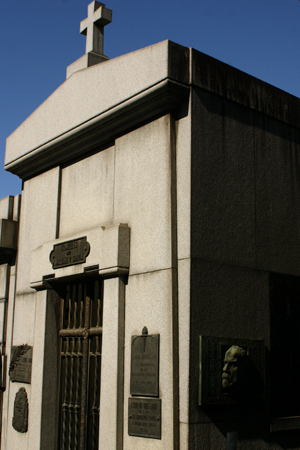
Although we’re still investigating why he was originally buried here, this was once the final resting place of Paul Groussac. Born into a modest family in Toulouse in 1848, Groussac denied a spot the French Naval Academy in order to travel the world. But his funds were running out in Bourdeaux, so he took a boat to a faraway destination: Buenos Aires. Arriving in Argentina in 1866 at the age of 18 with no Spanish, Groussac took odd jobs & studied mathematics… but it was his historical essays which got him noticed. Nicolás Avellaneda offered Groussac a professorial position at the Colegio Nacional in Tucumán where he remained for 12 years.
According to biographer Paula Bruno, Groussac returned to France in 1883 hoping to make a name for himself in Parisian literary circles. No one paid much attention so he quickly returned to Argentina to find fame there instead. In 1885, he was appointed Director of the National Library & occupied that post until his death in 1929. Groussac, in the space of 40+ years, converted the National Library into a leading cultural institution & achieved the reknown he longed for.
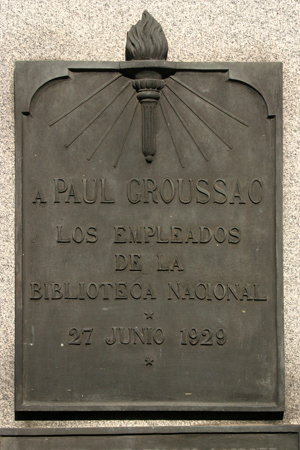
At a time when Argentina wanted to become as European as possible, Groussac’s French origins worked to his advantage. Bruno claims that Groussac thought his word on anything cultural was definitive just because he was French. Whether he was that arrogant or not, Groussac established two trade magazines, organized the library’s collection, wrote several historical biographies, stimulated cultural activity & strove to add value to intellectual life in Argentina. Jorge Luis Borges even wrote his obituary. One of the plaques displays an accurate relief of Groussac in later life along with names of some of his widely read publications:
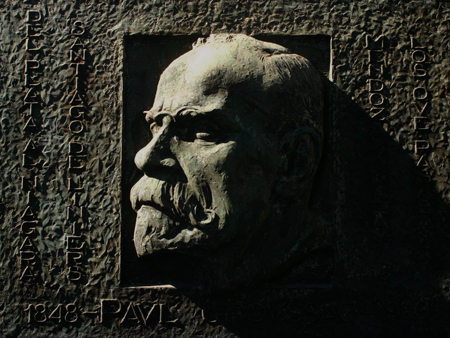
Moved after the completion of his own family vault, Paul Groussac can now be found on a prominent diagonal in Chacarita Cemetery:
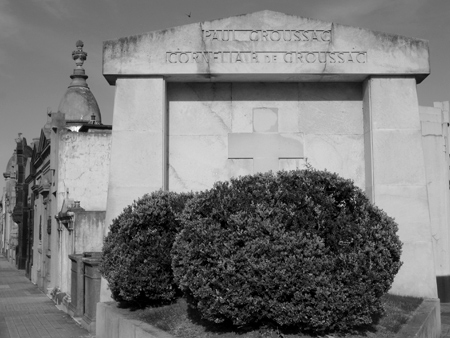
Update (06 Oct 2012): Thanks to a descendant, we have a plausible reason why Groussac was buried in this tomb. One of his daughters, María, married Esteban Macías sometime at the beginning of the 19th century.. They had seven children, one of which was the grandfather of Silvestre Macías… who found this post & left a comment. Thanks very much!
2 Comments
Premiering in 2001, “The Amazing Race” pits 11 teams of two people on an around the world trip to see who can complete challenges & finish the course first for one million dollars. Currently on its 15th season, naturally they’ve filmed in Buenos Aires a few times. Season 5, Episode 2 —airing in 2004— had teams travel by ferry from Uruguay to Buenos Aires & make their way to the tomb of Eva Perón. Of course. The teams make it, sooner or later, to their next clue inside Recoleta Cemetery:
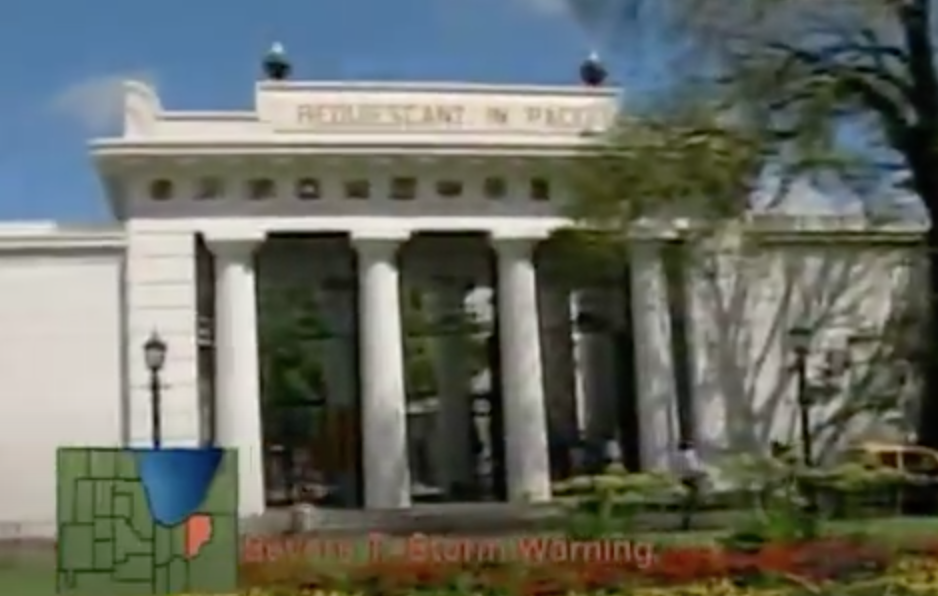
A few comments: Obviously the cemetery was closed during filming as there are no other tourists around. Driving the teams to the tomb in a vehicle normally used to transport caskets is a bit creepy & useless… Recoleta Cemetery is only four blocks big. Asking caretakers where her tomb is located would have been more realistic, & it’s only a 2-minute walk or 30-second run from the entrance. Better yet, they could have directed teams to the crypt of Aramburu first, then on to Eva with a history lesson along the way… but maybe that’s too much to ask.
Leave a Comment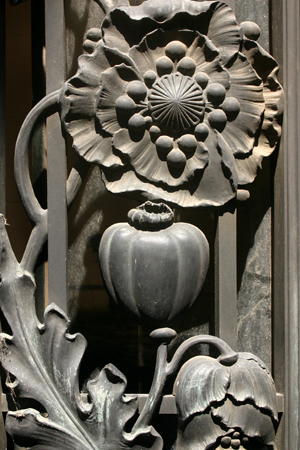
Who can forget the scene in “The Wizard of Oz” where Dorothy & the Cowardly Lion are in danger of falling asleep forever in the poppy fields?
The poppy has been associated with eternal sleep since Greek times when they were used as offerings for the deceased. Perhaps the effects of opium —intense relaxation & freedom from anxiety— also make the poppy an appropriate symbol for a cemetery. Although not common in Recoleta, the image can occasionally be found in wrought-iron doors & plaques:
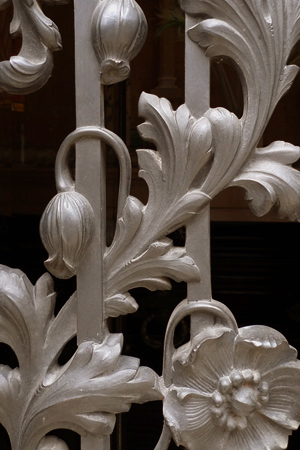
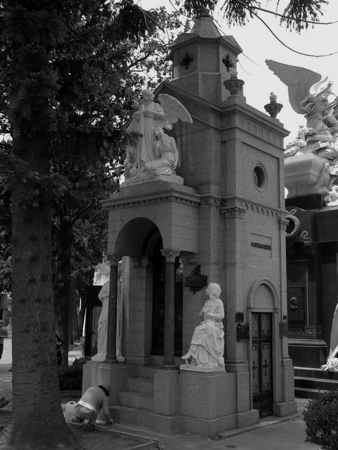
Like so many other occupants of Recoleta Cemetery, the López Lecube family owned large tracts of land in Argentina —theirs happened to be in the Province of Buenos Aires near the town of Puan. The remarkable thing about this tomb is its sculptures by Dolores “Lola” Mora… the only ones she ever did for a cemetery.
Dolores Mora, born in the province of Tucumán in 1866, received a grant from Congress to continue her art studies in Rome. By 1898 her most famous professor was Giulio Monteverde who did the crucifixion statue in the cemetery’s chapel:
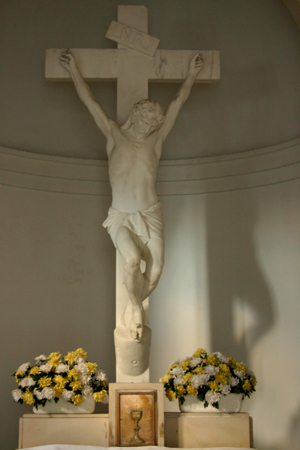
Lola Mora returned to Buenos Aires with her first public commission in 1903—a fantastic fountain depicting the birth of Venus titled “Las Nereidas.” Unfortunately the fountain was installed in a poor location for such a monumental work & was moved to Costanera Sur six years later. Some say that the naked figures on the fountain caused a scandal, but it was more likely a personal attack on Mora who had fallen out of official favor. She supervised the move, & the fountain continues to impress over 100 years later:
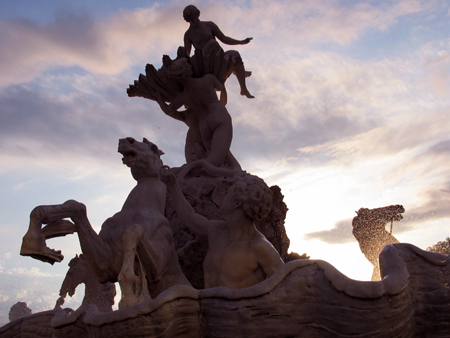
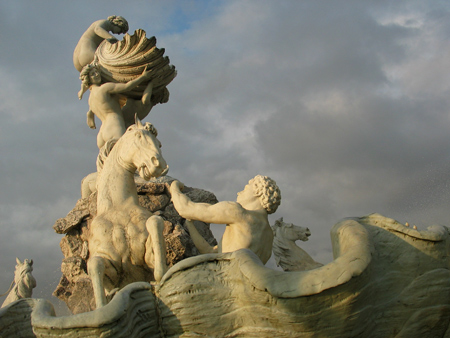
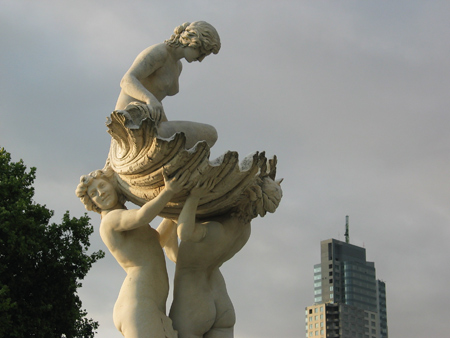
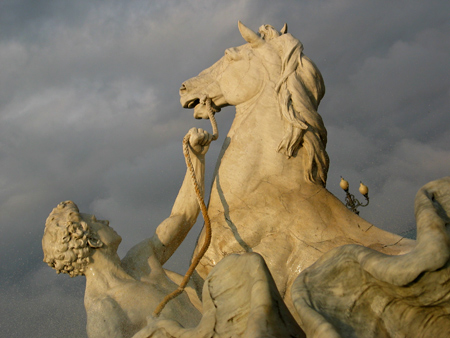
Moving the fountain was only the first of a series of public snubs Lola Mora suffered. The government refused to pay her for commissions, statues already in place on the steps of Congress were moved to faraway province, she was forced to sell her studio in Rome to pay debtors & project after project was denied her. Times & styles had changed, plus the affiliation with President Roca did her little good in later years. Lola Mora died in 1936 with no fortune or fame.
The statues for the López Lecube vault were commissioned in 1912 already after her luck began to turn. At least they are a significant addition to the artistic heritage of the cemetery. Signed by Mora during her brief marriage to Luis Hernández Otero, she was 15 years older than him & later discovered he was cheating on her. Obviously it didn’t last. The statues have been recently cleaned, making the signature almost invisible. Sometimes a bit of grit adds character:
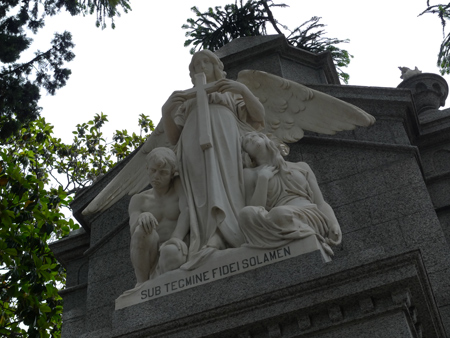
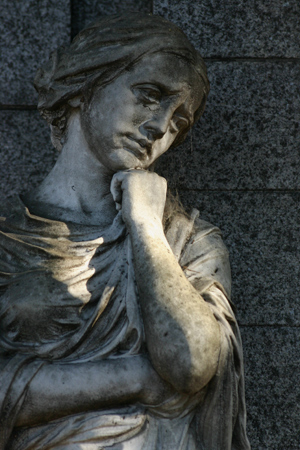
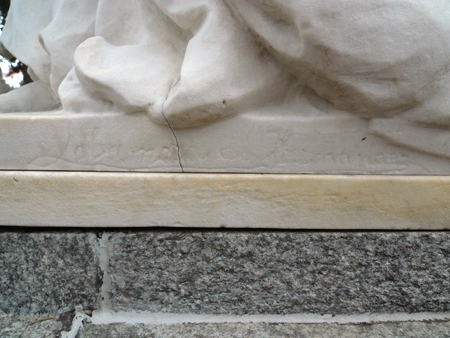
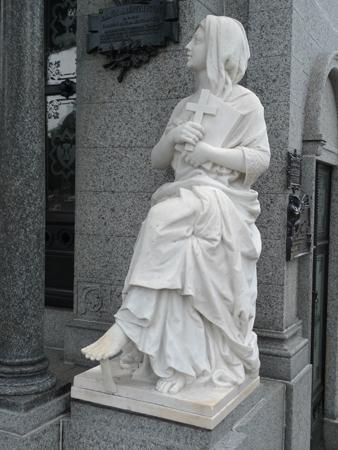
Update (24 Oct 2011): During a recent visit to San Miguel de Tucumán, I was able to visit the crypt of Lola Mora in the Cementerio del Oeste:
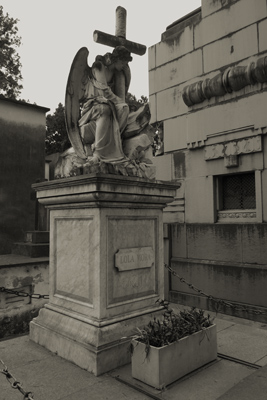
For more info about the fascinating life of Lola Mora, watch this episode of bio.ar produced by the government-sponsored Encuentro channel (in Spanish).
1 Comment